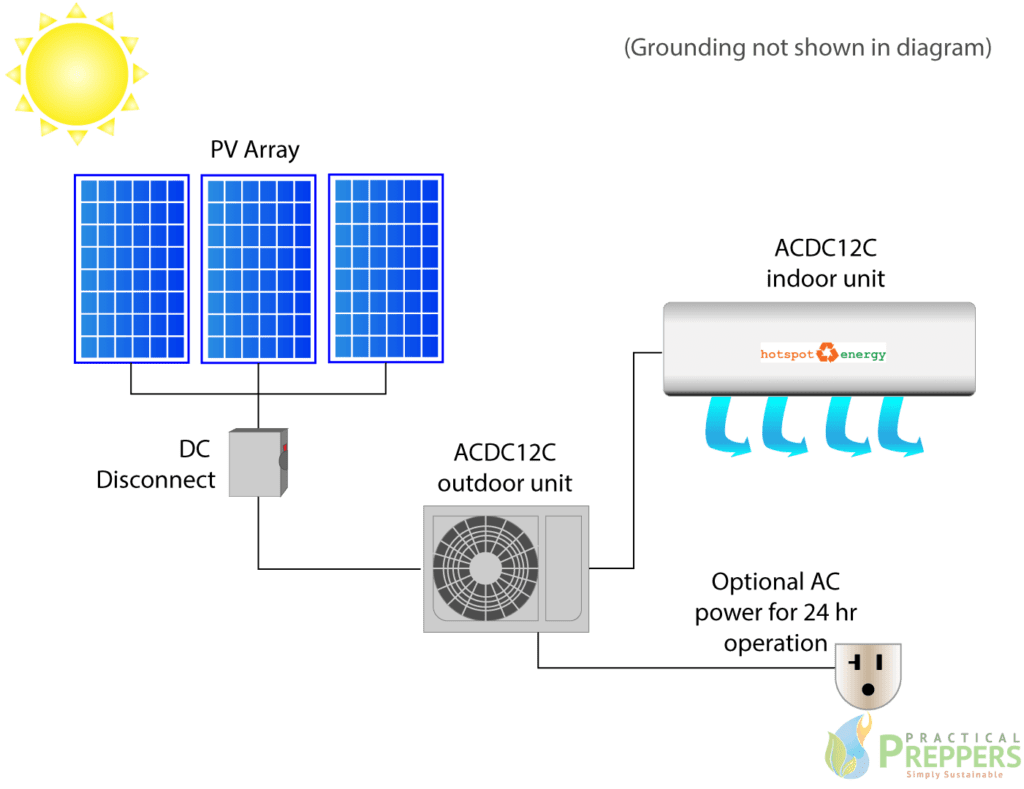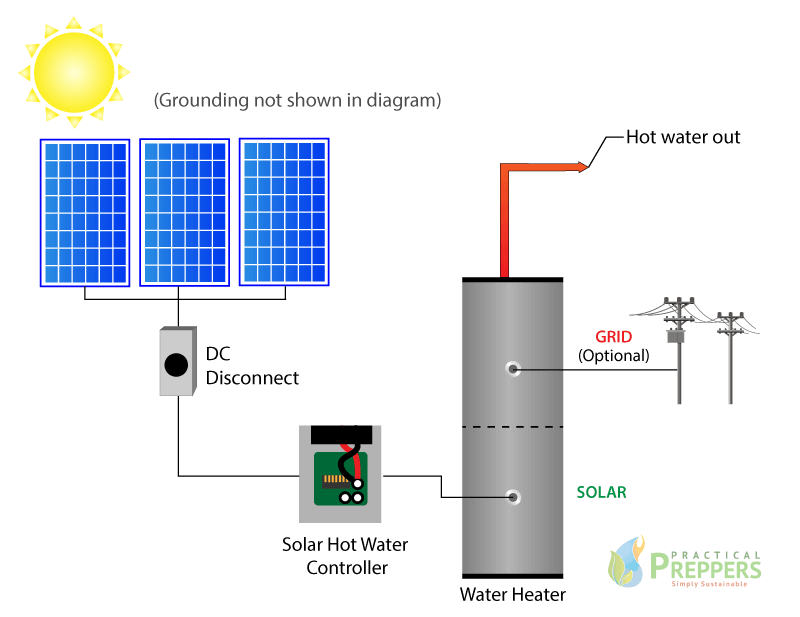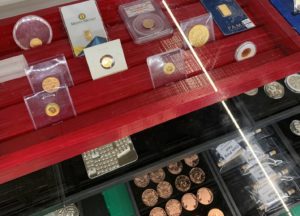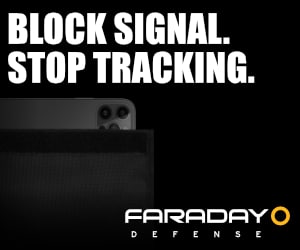Table of Contents
If you’ve thought about installing a solar system, then I’m sure you have experienced the overwhelming and sometimes defeated feeling when you learn about all the components involved and all of their options: grid-tie? off-grid? batteries? generator? roof mount? ground mount? The list goes on…and we haven’t even started talking about the price yet.
The lower price range for a residential, grid-tie solar system is around $20,000, while off-grid systems can easily top $50,000. This is a price tag that many people simply don’t have the resources to justify, even with the 2020 26% solar tax credit. And with this, many people decide solar isn’t right for them, at least not until they run into a LOT more money.
But what if we told you that solar doesn’t have to be complicated OR expensive? That’s right, there’s an alternative solar set-up that is both simple and affordable. I’m sure you’ve heard of PV-Direct, or Stand-Alone PV systems, especially if you watch our YouTube channel.
In this article, we are going to explain what PV Direct is and how it allows you to use solar to save money, and not break the bank to do it.
If you would like to bring solar power to your home, but aren’t quite ready or able to install a complete home solar system, then this article is for you.
What is PV Direct?
We use the term “PV Direct” because you are essentially using solar panels (photovoltaics) to directly run an appliance. No batteries, no inverters, no charge controllers needed.
A PV Direct system typically consists of a small grounded solar array, a disconnect, and a DC load. Occasionally there may be a few more components involved that serve to improve a system, but will not add much to the overall costs.
Below, you can see a typical hybrid solar system compared to a PV direct system:

In a hybrid solar system, the inverter, battery bank, and number of panels required to supply power to an entire home will cost tens of thousands of dollars. But none of this is required with a solar direct system.
While most home solar systems supply energy for an entire home, PV Direct systems run a single DC appliance. While this may not seem like a big deal, imagine using solar panels to cool and heat your home. Most AC units make up 46% of a home’s power bill, so while a single Solar Direct system is not zeroing out your power bill, it can still cut it in half! Now THAT is a big deal, especially when you consider how affordable PV Direct systems are.
We’re going to talk more about using PV Direct systems to run some of the most power-hungry appliances: Air conditioning, hot water, and well pumps.
Affordable Solar System for Cooling/Heating
46% of Power Bill
(based on heating/cooling payments of $90/month)
We have been using a PV Direct AC system for years with HotSpot Energy’s ACDC12C and ACDC18C. Solar AC just makes sense: they run best when the sun is hot and will drastically lower your power bill.
Air Conditioner units are the most power hungry appliance in most homes, making up an average of 46% of energy bills. Of course your AC/Heating usage will depend on where you live, but it is estimated that the average household pays $90 for heating/cooling every month (we think this is a conservative number for most homes); that’s over $1,080 a year. This system can be purchased for $3,495 (this includes 6 solar panels), which means you can easily receive your investment back in less than 4 years and enjoy free AC/Heating for many more! With this low cost solar system, you can turn the highest part of your bill into your lowest, or eliminate it altogether!
You will be able to keep your house cool during the summer and warm in the winter using 100% solar energy.
Take a look at the diagram below and we’ll talk more about the ACDC12C units and how the system works.

How it works:
The ACDC12C unit takes DC (solar) power and blends it with AC (grid) power, if available. You would want to add AC power if you wish to use the unit 24 hours a day. It can also help to have the grid back up in instances where solar is reduced due to clouds, overcast skies, or at night. Of course, the unit will not run without an AC connection in very low sunlight conditions, or at night.
When connected to both solar and an optional AC power source, the ACDC12C only uses small amounts of power from the utility company, if and as needed. Hybrid operation eliminates the need for batteries and allows use of the system 24 hours per day.
For home or office use, this system can cool an area for free with up to 100% of the energy coming from sunlight. In addition to cooling, the ACDC12C solar heat pump will provide solar powered heating, operating all the way down to an outside ambient temperature of 5 ⁰F.
This Air Conditioner Heat Pump is a mini split system. Nowadays people are opting for mini-splits instead of larger units for many reasons: Power costs are rising (moving homeowners away from 5 Ton systems), mini-splits are typically much more efficient, and they can be selectively used.
For example, you could use a mini split in your bedroom at night and not worry about the rest of the house, then turn on the other units during the day. Each mini-split also has its own thermostat, so they can run according to the demands of the part of the home they are in.
The maximum capacity will depend on the level of available solar power.
Note – this is not an “off-grid battery powered” unit, although adding batteries is possible, it is not the recommended use. If you have no AC power and need a 24/7 off grid solar, contact us to learn about your options.
Installation:
Click Here to order yours today or for more info and specs
The ACDC12C installs just like a normal mini-split air conditioner, then you connect the solar panels using industry-standard MC4 connectors.
You can use 3 or more normal solar panels (recommended 72 cell panels) of 290w-375w each and wired in series. You can order the panels, etc. from us or purchase them locally, note the panels should be minimum 36vmp rated, please review the specifications. If you use 60 cell panels (30vmp), use a minimum of four 60 cell panels. For off-grid operation during the day with no AC connection, with either type solar panel you may wish to add at least one additional panel.
The ACDC12C is shipped pre-charged with R410a, an ozone-friendly refrigerant and we recommend hiring a professional HVAC installer. If self-installing, you will need a licensed HVAC technician with a vacuum pump to do the final commissioning and to comply with US federal law.
The units include a 3M lineset, if a longer one is needed, you may use a standard lineset which can easily and quickly be made onsite by the installer. You can also order various length linesets (1/2″ x 1/4″) from various online sellers such as Home Depot, Amazon, etc.
Installation Video
Affordable Solar System for Hot Water
(based on hot water payments of $50/month)
Our favorite and most popular PV Direct system is the hybrid hot water system. People love this system because it’s an easy DIY project, is very affordable, and will save you a lot of money in the long run.
Next to AC units, water heaters are the second largest electricity users in the home, making up an average of 18% of power bills. This makes solar hot water one of the best home improvements projects you can do to start saving money.
To give you an idea of how much hot water costs, hot water accounts for about $50 of the average power bill. This means you are likely paying around $600/yr for hot water, and this system can be assembled for around $1,500, panels and all. So after only two and a half years you would have received back your investment, with many many years ahead of free, sustainable, hot water for your home.
Did I mention that this is a VERY easy DIY project; perfect for first-timers! Take a look at the diagram below and we will explain how the system works.

How it works:
This low-cost hybrid hot water system uses solar to provide all of your hot water needs, with your current water heater acting as a thermal battery (stores the heat produced by solar during the day), and the grid as a back-up source. However, this system can still work completely off-grid.
A solar array of 3-4 panels runs to the solar direct hot water controller, which provides Maximum Power Point Tracking (MPPT). You may see similar systems that connect the panels directly to the water heater, but heat conduction via MPPT is the most efficient way to heat your water via solar; being especially helpful on cloudy or hazy days. A great resource of information on this controller can be found here.
The hot water controller is connected to the lower element of your water heater, while the upper part is connected to the grid (for back-up). Most homes already have an existing water heater tank that is compatible with this system. It is very rare that one would need to replace their water heater for this project.
You will enjoy seeing your power bill plummet after installing this system. Our hot water has only cost us an average of $3/month after installing this system in our own home. The only time our system has switched to the grid is when we are entertaining guests (washing extra dishes) or have people staying over (taking more hot showers).
Tips: The more insulated your water heater, the better; you can purchase a water heater blanket from Home Depot for only $30 here.
Installation:
Click here to see installation videos, technical information, and to order the DIY kit. Below is a complete list of materials you will need for this project:
- Hot water tank (existing tanks in most homes work)
- Solar hot water controller
- 2-4 Solar Panels (300W), depending on how much hot water you use
- PV Cable (100 ft) with connectors
- Panel mount
- Pole (for top of pole mount)
- heat sink for controller
- Mounting hardware
- Disconnect
Installation Video
Affordable Solar System for Well Pumping
(6SQF-3 pump, controller, pressure switch, panels, mounting, cable, and connectors)
We are passionate about developing sustainable water sources and have been installing solar well pumps for over 15 years.
The well pump we repeatedly use and recommend is an affordable solar direct system using the Grundfos SQFlex series pumps. We continue using this system because after 15 years of installions, we have had ZERO failures. It’s a proven pump that will supply water in the most remote areas where the water is scarce or the power supply is unreliable.
The Grundfos SQFlex series pumps are cost-effective, efficient, low-maintenance, and simple to install. Take a look at the diagram below and we will talk more about how the system works.

How it works:
This PV Direct well pump system has never failed us. You can use solar, wind, or a combination of both as your power supply. The CU200 Controller offers indication of a full water reservoir, pump operation, and input power and also prevents the panels from supplying too much or too littler power to the pump.
The Grundfos pump itself is a complete intelligent system that is compatible with both DC and AC power supply without requiring an external inverter.
You can add battery or generator back-ups to the Grundfos pumps in the case that nature is not meeting your demands.
The complete range of Grundfos SQF pumps consists of ten different pump sizes: Four helical rotor pumps for applications where a high head is required, and six centrifugal pumps for applications where a greater flow rate is necessary.
Other pump features include:
- Soft start
- Dry-run protection
- Maximum Power Point Tracking
- Wide Voltage Range (from 30-300 VDC or 90-240 VAC)
- Built-in sand shield
Please request a consultation if you need help sizing and planning a water pump system.
Installation:
Click here to order your Grundfos pump today.
This installation will require both electrical and plumbing work. We recommend having a professional installation, which will add to the cost but usually only takes one day.
Installation Video
Is PV Direct Worth it?
It is still worth it to keep in mind that PV Direct systems can still be made more complex to meet your needs. Whether you want to go completely off grid with AC and hot water, or add irrigation to your water pumping system, you can accomplish all of this through solar direct. You can see all of our PV-Direct systems here.
How Do I Get a PV Direct System?
We hope this article was helpful for you. We’d love to hear about your experience with PV Direct or other affordable, off-grid projects in the comments below!











